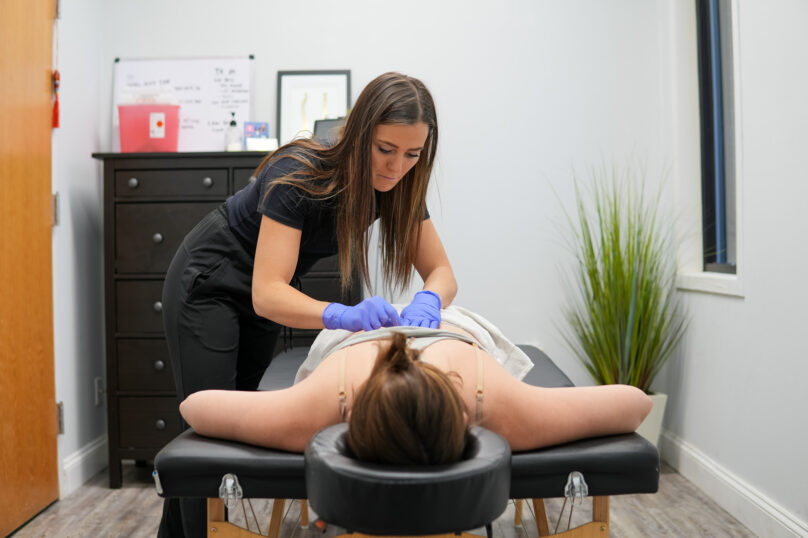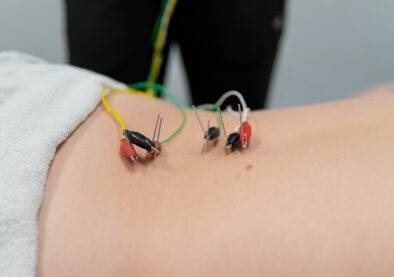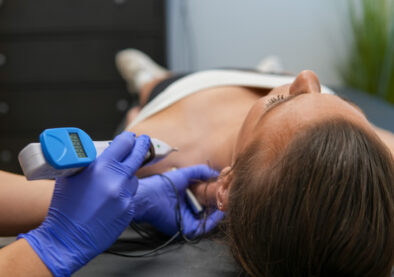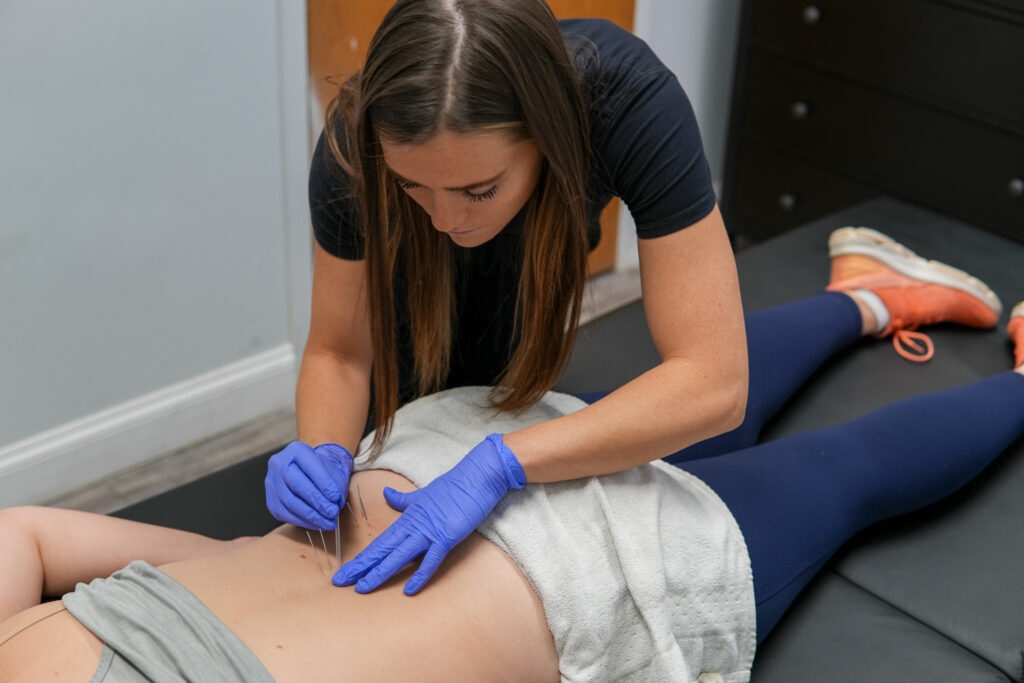- Your cart is empty Browse Shop

Intramuscular Stimulation (Dry Needling)
Dry needling, or Intramuscular Stimulation (IMS), is a targeted, evidence-based technique used to reduce pain, improve tissue health, and restore movement efficiency. By inserting a fine, solid filament needle into areas of muscular dysfunction – such as trigger points or regions of excessive tone, we stimulate a localized neuromuscular response that supports recovery on both a mechanical and neurological level.
Each session begins with a thorough assessment to identify impaired movement patterns, muscular imbalances, or overactive regions contributing to your symptoms. The needle is applied with precision to influence tissue behavior, disrupt pain cycles, and reset muscle activation patterns that are critical for safe and efficient movement.
Dry needling does not involve the injection of any substances—the term “dry” refers to the use of the needle alone to elicit a therapeutic effect. The outcome is a combination of mechanical stimulation, improved local circulation, and central nervous system modulation, which helps resolve pain, restore range of motion, and improve muscle recruitment.
Dry Needling vs. Acupuncture
While both dry needling and acupuncture use the same type of fine monofilament needle, the intent, application, and clinical reasoning behind the techniques differ significantly.
| Dry Needling | Acupuncture | |
|---|---|---|
| Origin | Western medicine / neurophysiology | Traditional Chinese Medicine (TCM) |
| Focus | Trigger points, neuromuscular dysfunction | Energy pathways (meridians), qi flow |
| Application | Based on orthopedic and movement assessment | Based on TCM diagnosis and pattern theory |
| Goal | Restore muscle function, reduce pain, improve mobility | Rebalance energy, promote overall health |
| Use in Rehab | Integrated with physical therapy treatment plans | Typically standalone or complementary care |
Dry needling is grounded in neuroscience and motor control,and is used within the scope of physical therapy to address localized dysfunction and movement-based impairments. While both techniques can reduce pain, dry needling is more focused on mechanical and functional outcomes rather than systemic energy balance.
How It Works
Dry needling produces a local twitch response in the affected muscle, helping:
- Reduce sustained muscle tension
- Improve oxygenation and blood flow
- Restore neuromuscular coordination
- Interrupt chronic pain loops


This technique is often paired with manual therapy and corrective exercise, allowing for deeper changes in motor control and movement efficiency. Many individuals report immediate improvement in flexibility or pain relief, which accelerates their ability to engage in strength and movement training.
What Conditions Can Dry Needling Help?
Muscle tightness and trigger points
Sports-related soft tissue injuries
Chronic neck and back pain
Shoulder impingement and rotator cuff issues
Tension headaches and jaw pain (TMJ)
Sciatica and nerve-related muscle dysfunction
Post-surgical muscle inhibition
Tendinopathies and overuse injuries

What to Expect During Treatment
Assessment-Based Approach: We use dry needling strategically, based on your specific diagnosis, movement dysfunction, and overall treatment plan
Minimal Discomfort: Most patients feel only a brief twitch or ache during treatment. Soreness may follow, but this typically resolves within 24–48 hours.
Integrated Care: Dry needling is used alongside manual therapy, corrective exercise, and neuromuscular re-education—not in isolation—so results are more meaningful and lasting.
Licensed and Trained: Your therapist is certified and trained in the latest dry needling protocols, ensuring both safety and effectiveness.

